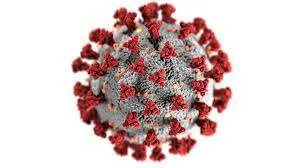As COVID 19 continues, a great winter activity is to plan your gardening wants and needs for the year. Plants like cabbage and kale are among the first vegetables you plant in the vegetable garden. Most gardeners obtain plants from local plant growers or suppliers. In areas where dealers are not available or where the desired varieties cannot be obtained, gardeners may need to produce their own plants. Most garden centers sell plastic or peat containers, larger flats to hold them, and seed starting mixes to fill them. You can also use paper or Styrofoam cups (be sure to provide a drain hole in the bottom of a solid container). Plant several seeds in each container and thin them later to a single plant. Cover lightly with a thin layer of the planting medium and water gently. Place the box or flat in a warm location and keep it moist until the seeds germinate. As a general rule, it will be 6-8 weeks from the time seeds are sown until the plants are ready for transplanting to the garden.
Growing Media: There have been many advances in potting mixes in recent years. A trend has developed to use soilless mixes because of their freedom from disease or insect problems, and ease of use. Most commercial brands contain peat and vermiculite plus other additives. Drainage is excellent, water holding capacity is good, and the mixes are lightweight. They do require fertilization since they contain or hold relatively little fertilizer elements.
For growing transplants, choose a commercial fine-textured seed starting mix. You may find that fertilizing and watering practices need to be altered slightly for different potting mixes. Also, each container size or style that you choose may have slightly different requirements.
Fertilization: Transplants, especially those grown in soilless mixes, do require regular fertilization after germination when growth starts. Soilless mixes usually require fertilization two to three times per week using a soluble fertilizer. Ask for a soluble fertilizer from your local garden dealer and follow label directions for fertilizing and watering seedling plants. Avoid heavy fertilization in periods of dark, dreary weather. Just prior to setting plants in the garden, make sure they are well watered and fertilized. You might want to use a plant starter solution available from your local garden dealer as you set plants in the garden.
Seeds: Seeds can be obtained from local dealers and seed catalogs. Commercially available seeds are treated for disease and insect resistance and are stored under conditions which ensure health and vigor. It is possible to get atypical plants when you save your own seeds and when the plants are cross-pollinated or hybrid varieties.
Starting Transplants: The growth period of plants can be divided into three distinct stages: germination, growth, and acclimation (hardening).
Germination: Seeds will germinate when supplied with water and a desirable temperature. Some crops, such as lettuce, require a lightbulb, most crops do not. Temperature, however, is important. Germinating seeds at the optimum temperature offers several advantages:
* Greater germination percentage, particularly for expensive hybrid seed.
* Faster germination.
* Concentrated germination producing a more uniform stand and maturity in the field.
For best results, keep the temperatures at or near the optimum (80-85º F) by monitoring the temperature of the media with a probe thermometer. Locate containers in a warm location and cover with plastic or an insulating blanket to reduce evaporation, or use a germination chamber.
Growth: After germination occurs, growth starts. Plants require water (including nutrients if they’re not available in the media), cooler temperatures, and light to grow. Light is the most critical factor. Adjust temperatures for day-night conditions. On dreary days, reduce the temperatures to prevent weak, spindly plants. A temperature of 65-70º F is best.
Acclimation or “Hardening”: During the last week of growing, transplants can be acclimated to the shock or stress of field setting by reducing growth conditions. This is done by lowering temperatures, reducing watering, or both. Cool season crops can be made more frost tolerant while warm season crops will be less succulent for improved field survival. A shift in the fertilization schedule to reduce nitrogen (which encourages vegetative growth) and increase phosphate fertilizers (which encourages root development) is suggested 3-5 days before field setting. This can be done by substituting “root stimulator” for the previous
soluble fertilizer.
Artificial Lights: It is difficult to find a location in the home that is light enough to grow plants successfully and cool enough to maintain a strong stocky plant. Thus, you might want to consider starting plants under artificial lights. A standard 2 bulb fluorescent “shop light” works well if supported by a wood or PVC pipe frame. The light should be mounted on chains so it can be raised and lowered as the plants grow. Initially, drop the light to just over the seed flats then gradually raise the light so that the lights are 2-4 inches from the top of the growing plants.





